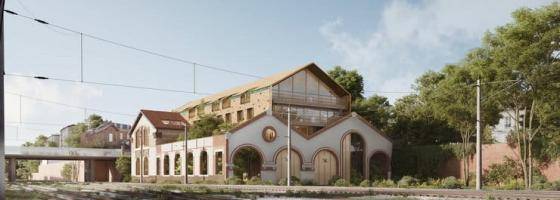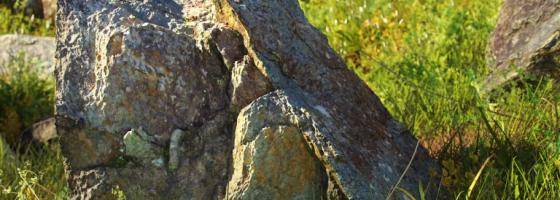
Rune Spaans is renowned in the 3ds Max community as an animator, VFX artist, and tool creator. He can now add award-winning animation director to that impressive list. The Absence Of Eddy Table is Rune's first animated short film, started when he realised he could no longer wait for the perfect project to come along. “Nobody is going to come up to you and offer you the chance to make a film,” Rune tells us, “you have to do that yourself.”
Created in collaboration with Dave Cooper, The Absence of Eddy Table is a rare thing: a self-initiated independent animation with high production values, a talented hand-picked team, and best of all, no commercial pressure. The result is a meticulously crafted, marvellously idiosyncratic film that asks what we are willing to give up in our pursuit for happiness.
Rune was kind enough to talk to us about this fascinating project, including managing the team, development, achieving the film's unique look, and how Forest Pack in conjunction with Chaos Group's V-Ray helped to realise the impressive environments needed to bring Dave Cooper's illustrations to life.
Romantic horror
As yet, The Absence of Eddy Table can only be seen on the festival circuit, but the teaser trailer reveals a tantalising glimpse of the film's unnerving but beautiful world. If you are fortunate enough to have attended a screening, you'll know that it’s a hard film to describe. Rune himself explains it as “a romantic horror short about daring to let yourself go in order to find love, even if it means surrendering all that you are”, which describes the themes succinctly, but not perhaps the viewing experience. With no dialogue, rich design, and arresting metaphors, the film is to be first felt and then thought about; the story is discovered rather than laid bare. "I wanted to make a film that explains less rather than more," Rune tells us, "making us part of the journey and discoveries that Eddy Table goes through.”
The script, written by Eddy's creator Dave Cooper, is completely new, but Eddy Table himself is middle aged. He originally stalked the pages of Dave Cooper’s cult early 90s underground comic Weasel before becoming a recurring character in his work and appearing as a vinyl toy in 2004.
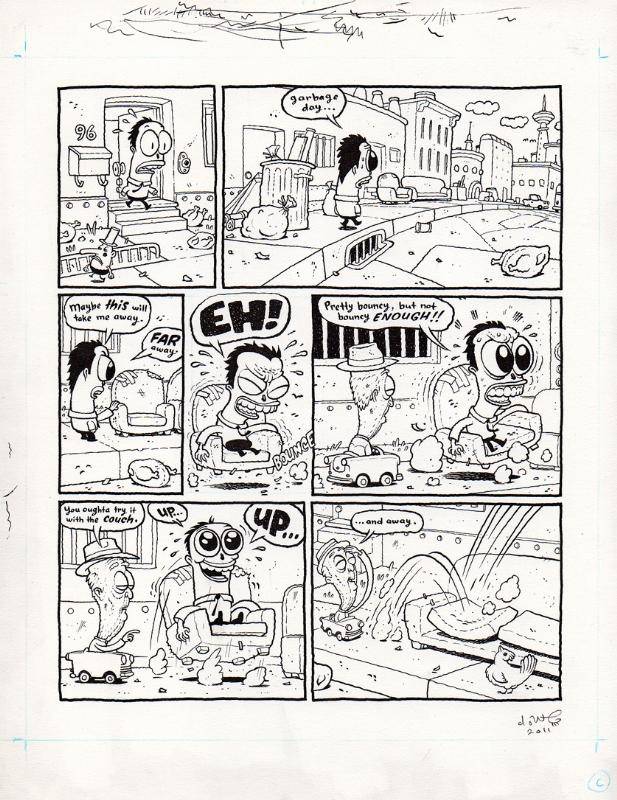
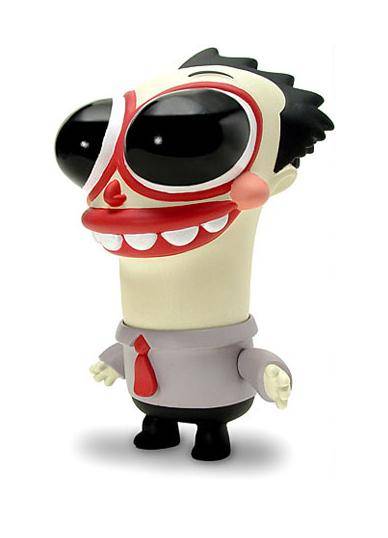
Eddy Table in the comic Weasel and as a vinyl toy
It was a long-standing appreciation of Dave Cooper’s oil paintings that kick-started the collaboration between the two artists. “I've been a fan for many years,” Rune says, “and really wanted to see his artwork adapted to 3D animation. Looking at his paintings, I knew his style could be fantastic in 3D. After finally building up the courage to email him, things started rolling pretty fast. We quickly got a producer, Eric Vogel at Tordenfilm, on board and secured funding from the Norwegian Film Institute. Dave wrote this beautiful little story about Eddy Table, one of his comic book characters, and also stayed on as Art Director on the film.”

Fallen Quadratych, Oil Painting © Dave Cooper
The importance of local talent
In an increasingly decentralised workplace where tasks are atomised and outsourced, freelancers work remotely, and Skype and email are main forms of team communication, the production of The Absence of Eddy Table stands apart. As well as Dave Cooper, Mike Patton is the only other member of the production who isn't Norwegian. Rune tells us that the reasons for this are largely practical. “We couldn't have made it on time or budget if we had been spread around the world. Having the entire team in one location made it possible to do the film without any asset or feedback/versioning software.”
Directing animators is another crucial reason for keeping it local. “I could just go talking to the animators or artists without spending time on emails or Skype.” Rune says, “I hate writing emails, so for me personally this was a huge relief! Communicating nuanced acting through text is really difficult (it's hard enough doing it verbally), so being in the same room with the animators acting stuff out with them was great.”
The personnel list was kept deliberately short and Rune was fortunate to be able to hand-pick his dream team. Dani Sappa was the lead animator, with Oddne Madsen and Thea Matland as animators. Most of the models were built by Christer Sveen, with additional models by Storyline Studios in additional to final compositing and grading. Johan Leuf acted as 3D supervisor, responsible for sets, lighting and rendering. Rune took on the role of directing the short, as well and working on tools, rigs, and filling in wherever he could.
Visual artists often overlook the role of sound design in their own projects, but this is audibly not the case for The Absence of Eddy Table. Rune assembled an impressive cast for the film, with Mike Patton (of Faith No More fame, as well as many more musical, vocal, and soundtrack projects) , Ingrid Bolsø Berdal (recently seen as Armistice in HBO’s Westworld), Yngvill Haga (Homesick and The Last King) providing the voices. The soundtrack was composed by Kaada, with sound design by Fredric Vogel.
Even though production has long since finished, collaborations continue. Last week Kaada/Patton released a music video for their single Red Rainbow from the new album Bacteria Cult. The video features footage from the Absence of Eddy Table, nearly a third of the total film, providing a great taste of how it looks and plays.
Developing the film's unique look.
With a caricatured style and elastic characters, capturing the look of the original comics in 3D was a challenge. Added to this, the set design is highly stylised and densely populated. These things are not easy, or cheap, to create in CG. “A big challenge was finding a way to adapt that without falling short in terms of style”, Rune says. “Doing caricatured animation on that level is very time-consuming and expensive, so that was something we decided to avoid. The solution came when I started thinking the other way around. I imagined Dave's drawings to be a caricature of our more physical and realistic look. So Eddy in the film is more grounded and naturalistic compared to the comics. Also, Dave allowed me to look at his paintings as reference for textures and light. I took the same approach with the paintings, imagining that Dave had based his paintings off a more realistic source.”
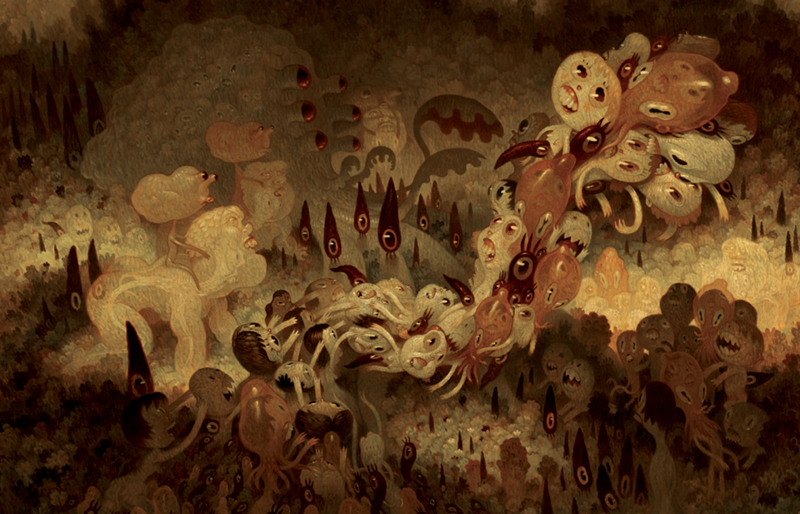
Arm of Hosts, Oil Painting © Dave Cooper
This approach - working backwards, imagining the scene in front of Dave as though he’d drawn his painting from life - is the key to creating the film's unique art style and might account for a common misconception that it's a stop-motion short. Rune explains that this could also be because live-action cinema was an inspiration for the film’s cinematography and editing: “I really wanted a physical and dynamic feel to the film. Animation is such an overly planned technique, it's really easy for it to end up stale and falling into the same tropes or patterns. I spent a lot of time with cameras and editing trying to make the film feel organic and a bit random. We also used physical cameras, lights and rendering for a realistic look. I love the look of the CinemaScope Panavision lenses, that brought so much to the look of films such as Blade Runner, Alien and Empire Strikes Back, so I went to great lengths to copy that type of lens.”
Forest Pack in production
The team had a short six-month window where they could collaborate in one office. During that time they worked on the editing, animation and all the assets. "After that I had to go on to work on other projects, " Rune says "so me and my supervisor had to put together the sets and light the film on our spare time. That took a little over two years. The main milestone was having the animation completed while we shared an office, after that I spent the necessary time making sure the film was as good as I was able to do it. One challenge in particular was the sheer level of detail needed to make something that did justice to Dave's artwork. His backgrounds are incredibly lush, so a lot of time was spent building each set". Forest Pack proved invaluable and the plugin was used extensively throughout.
Rich and detailed environments
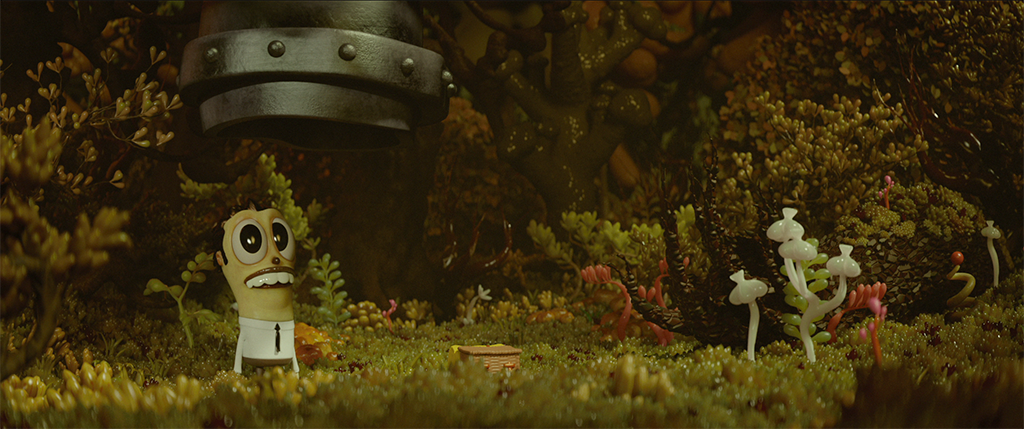
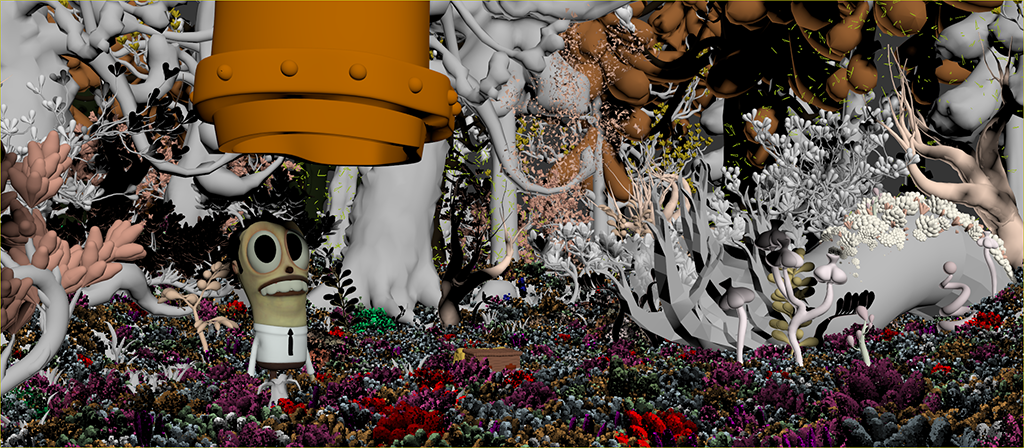
As the first shot in the film has to set the tone, look and quality for the rest of the story, it was important that it be rich and detailed. To achieve this Rune tells us that "three different Forest Pack systems cover the ground, using a combination of automatic and painted placement to break things up. There's also a smaller Forest Pro system covering the trunk visible on on the right."
Forest Pack's randomisation features made it ideal for quickly and believably populating scenes. "Forest Pack has some great features for creating variations on the object that you scatter," Rune says, "like the ground growth on our film; even though it's just a couple of objects, Forest Pack can randomise both the scale, colour and texture of the objects. And it can do that in clusters, so that you get a kind of patterned randomness that looks very natural. And I love that you can either scatter inside a shape or just paint the objects on the surface. That flexibility is fantastic!"
Forest Pack and displacement

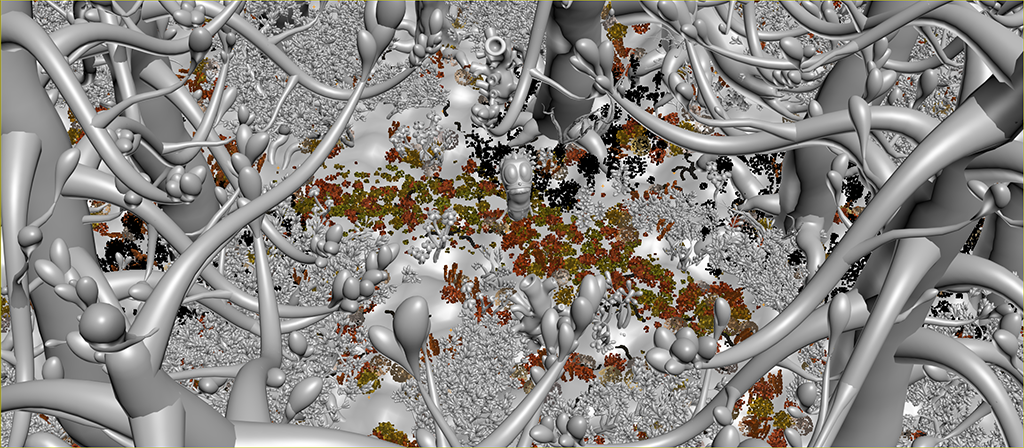
With so many objects in a scene, even with Forest Pack's ability to render nearly limitless geometry, it’s important to optimise as much as possible. In the scenes shot wide from a high angle, Rune's team used some interesting techniques to improve performance. He explains that instead of completely covering the ground with scattered geometry, “we created a 2x2 metre patch of Forest Pack growth that we baked out into a displace and colour map. This was used for the ground which was then covered by other growth, mostly to speed the viewport up a bit. We then created a separate Forest Pack system that covered the ground only where the character walked."
"It's important to keep your objects efficient. Even though Forest Pack has no problems scattering millions of objects, it's good to have the objects as optimised as possible to keep the viewports fast. We split the Forest systems into foreground and background systems, using lower resolution geometry in the background. Animated objects can slow down the system too, so turn off the updating of animation for a speed boost."
A reusable system
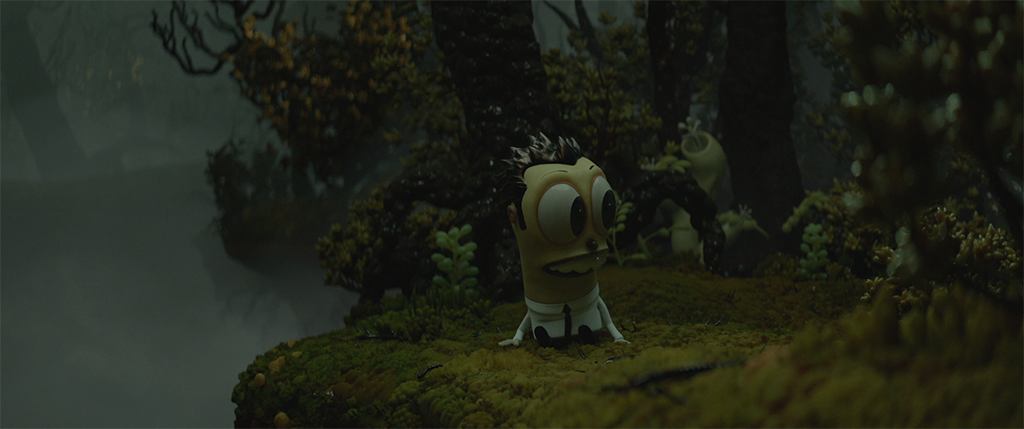

A clear, repeatable workflow can really speed up scene creation. In the Absence of Eddy Table Rune tells us the "used a Forest Pack system in the backgrounds, which emit from simple polyobjects that were positioned to cover the shot. You can see that at the left in the image above. The background system scattered a combination of bushes and trees, creating the claustrophobic feel we wanted in the forest. That was really fast to copy into a new scene and fill up the sets."
Rune tells us that the plugin's parametric approach will change the way he tackles projects in the future: "Scattering objects with Forest Pack means you open up the modelling process to a non-linear workflow, which makes everything more flexible. So whenever I need to create a large group of objects, I ask myself if I can do it in Forest Pack instead of manual placement? I feel I've barely scratched the surface of what Forest Pack can do! The feature set is so huge, there is just so much of it I need to try out. I'm very interested in trying out the new Forest Effects features of 3.0, that is something I hope to use in the future. Also, I look forward to deeper support with the Redshift renderer, we used this for 10 shots in the music video, but support for the full features set is something that is lacking at the moment."
Forest Pack plays well with others
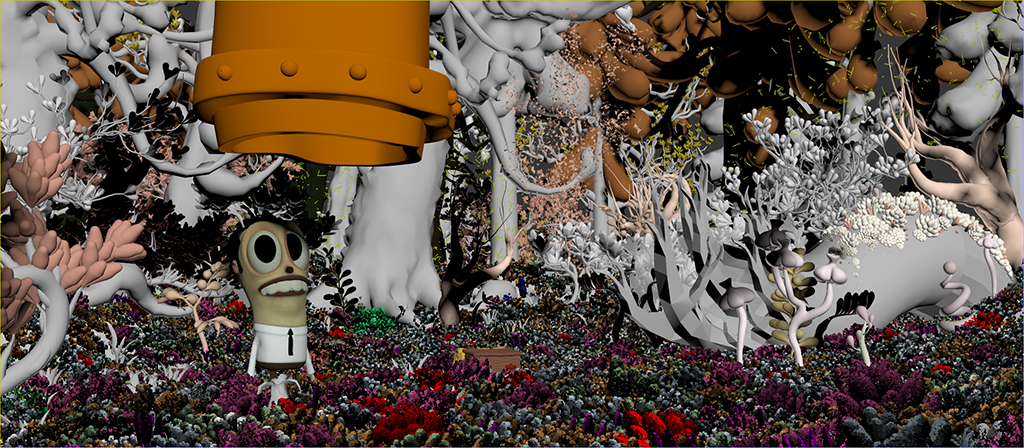
The film also makes extensive use of plant modelling tool GrowFX. "It's another one of my favourite plugins." Rune says. "We investigated ways of creating detail procedurally, and GrowFX is a plugin I've used for many years to create all kinds of vegetation objects, so it made sense to use it. We started out modelling many of the plants by hand, but found out we could replace almost all of them with GrowFX objects, creating infinite variety. And it worked great with Forest Pack too, we could even use GrowFX to create wind animation in trees and bushes scattered with Forest Pack."
Rune also creates his own tools tailored for use in productions, and makes them available for free to other artists: "I do a lot of scripting, and have a nice collection of tools that help me be more efficient and solve otherwise impossible tasks. 3ds Max has some built in rigs, but they are either time-consuming to use or buggy, so I wrote my own system, Super Simple Rig, in order to have something solid and fast to animate with. I'm really proud of the rig, and decided to share it for free on my site. I add functionality to the rig on every animation project I do, and for the short film I added some features for more cartoony animation, and also a simple shot-management window which I will be sharing soon."
Love the concept!
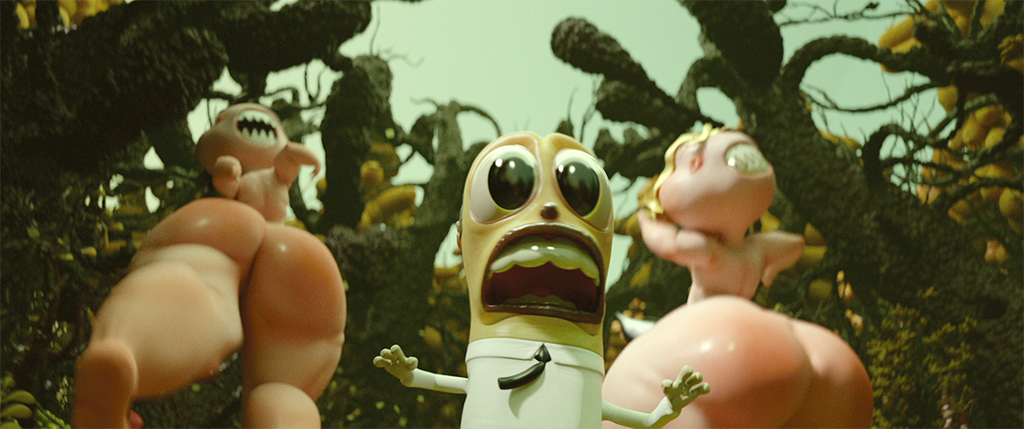
What advice would Rune give to other animators? You have to love the concept, first of all. “Creating a short film can take a long, long time, so make sure you are really really happy with the script and the project. Even though it's been hard work, it's always been a pleasure sitting down with the project, and I think it shows. Another important thing is to boil the project down to the absolute minimum, take away anything not vital to the story or the film. Then make the remaining bits as great as possible!”
“I'm really proud of the quality we achieved despite having such a small team. Everybody is surprised at the lush look of the film, so I think that is one thing that sets it apart. Also, the fact that the film is done with no commercial intent, basically we just did a film we wanted to see ourselves, is something that I would say is unique.” We'd have to agree.
